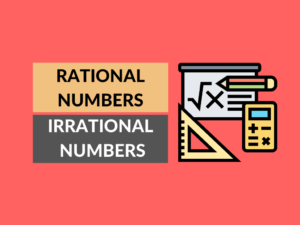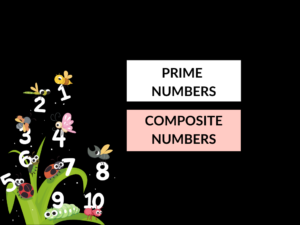Sequence vs Series: Understanding the Key Differences
Welcome to our comprehensive guide on the differences between sequence and series. In mathematics, both sequence and series play vital roles, but they have distinct characteristics and purposes. In this article, we will explore the definitions, examples, and applications of both concepts, and provide a detailed comparison between sequence and series.
What is a Sequence?
A sequence refers to a list of numbers arranged in a specific order, following a certain pattern or rule. Each individual number in a sequence is called a term. The order of the terms is important and can significantly alter the nature of the sequence. Sequences can be finite (limited terms) or infinite (endless terms).
Examples of Sequences:
- 1, 2, 3, 4, 5, … (an infinite sequence of natural numbers)
- 2, 4, 6, 8, 10, … (an infinite sequence of even numbers)
- 1, 4, 9, 16, 25, … (an infinite sequence of perfect squares)
Uses of Sequences:
Sequences are widely used in various branches of mathematics, computer science, and real-life applications. They help model patterns, analyze data, and solve problems in fields such as physics, finance, and engineering. Sequences are also crucial in understanding the concept of limits and convergence, which form the foundation of calculus.
What is a Series?
A series is the sum of the terms in a sequence. It is the result of adding all the terms together, usually indicated by the Σ (sigma) notation. Series can be finite (summing a specific number of terms) or infinite (summing an endless number of terms).
Examples of Series:
Let’s consider the same sequences we mentioned earlier:
Finite Series:
- 1 + 2 + 3 + 4 + 5 = 15 (the sum of the first five natural numbers)
- 2 + 4 + 6 + 8 + 10 = 30 (the sum of the first five even numbers)
- 1 + 4 + 9 + 16 + 25 = 55 (the sum of the first five perfect squares)
Infinite Series:
- 1 + 2 + 3 + 4 + 5 + … = ∞ (the sum of all natural numbers, which diverges to infinity)
- 2 + 4 + 6 + 8 + 10 + … = ∞ (the sum of all even numbers, which also diverges to infinity)
- 1 + 4 + 9 + 16 + 25 + … = ∞ (the sum of all perfect squares, which also diverges to infinity)
Uses of Series:
Series are fundamental in various areas of mathematics, physics, and engineering. They help solve problems related to calculus, differential equations, and numerical analysis. Series are often used in approximations, such as Taylor series expansions, where complex functions can be approximated by an infinite sum of simpler terms.
Differences between Sequence and Series:
| Difference Area | Sequence | Series |
|---|---|---|
| Order | The order of terms matters. | The order of terms matters, but the sum is important. |
| Sum | A sequence does not have a specific sum. | A series represents the sum of a sequence. |
| Finite | A sequence can be finite or infinite. | A series can be finite or infinite. |
| Notation | Sequences are usually denoted by {a_n} or (a_n). | Series are typically represented by Σa_n or a_1 + a_2 + a_3 + … |
| Convergence | Sequences can converge or diverge. | Series can converge or diverge. |
| Terms | Each element in a sequence is called a term. | Terms are summed to create a series. |
| Representation | A sequence can be represented as a list or a graph. | A series is represented by a single value or an expression. |
| Applications | Sequences help model patterns and analyze data. | Series are used in approximations and solving equations. |
| Examples | Natural numbers, geometric progression | Power series, Taylor series |
| Mathematical Focus | Sequences focus on the individual terms. | Series focus on the sum of terms. |
Conclusion:
Sequences and series are two fundamental concepts in mathematics. While sequences represent the ordered list of terms, series are the sum of those terms. Sequences are used for modeling patterns and analyzing data, while series find applications in approximations and solving equations. Understanding the differences between these two concepts is crucial for various mathematical and real-life applications.
Knowledge Check:
- What is the main difference between a sequence and a series?
a) Sequences have a sum, while series do not.
b) Sequences focus on the sum, while series focus on the individual terms.
c) Sequences represent ordered lists, while series are the sum of those terms.
Answer: c) Sequences represent ordered lists, while series are the sum of those terms. - Can a sequence be infinite?
a) Yes
b) No
Answer: a) Yes - Which of the following is a series?
a) 2, 4, 6, 8, 10
b) 1 + 2 + 3 + 4 + 5
c) 3, 6, 9, 12, 15
Answer: b) 1 + 2 + 3 + 4 + 5 - What symbol is commonly used to represent a sequence?
a) { }
b) [ ]c) Σ
Answer: a) { } - Which of the following is an example of series convergence?
a) The sum of all natural numbers
b) The sum of all perfect squares
c) The sum of all odd numbers
Answer: b) The sum of all perfect squares - Can a finite series diverge?
a) Yes
b) No
Answer: b) No - What do terms in a sequence refer to?
a) The sum of the sequence
b) The individual numbers in the sequence
c) The average value of the sequence
Answer: b) The individual numbers in the sequence - What are series commonly used for in mathematics?
a) Modeling patterns and analyzing data
b) Solving equations and approximations
c) Simplifying complex problems
Answer: b) Solving equations and approximations - Which of the following is a power series?
a) 1, 2, 4, 8, 16
b) 1 + x + x^2 + x^3 + x^4
c) 2, 4, 6, 8, 10
Answer: b) 1 + x + x^2 + x^3 + x^4 - What do sequences and series help model and solve?
a) Financial markets and economic trends
b) Physical phenomena and scientific experiments
c) All of the above
Answer: c) All of the above
Related Topics:
If you found this article on the differences between sequences and series helpful, you may also be interested in learning more about related topics such as mathematical patterns, limits and convergence, calculus, and Taylor series expansions.




